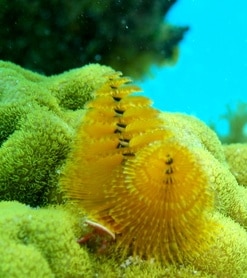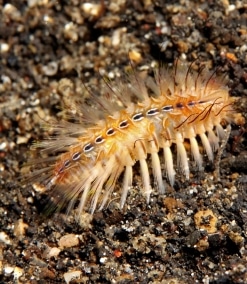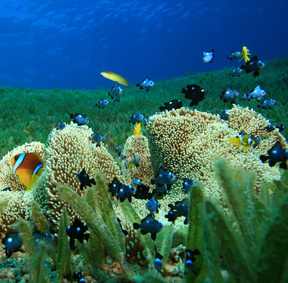Coral Reef Polychaetes
Polychaete “worms” are a ubiquitous part of the invertebrate fauna inhabiting coral reef ecosystems. They play a variey of roles in the reef community, with species that feed as carnivores, filter-feeders, deposit-feeders, and/or omnivores
Polychaete “worms” are found in a broad array of marine habitats.
They are common on and in the hard reef framework as well as within seagrass meadows, mangrove forests, coral rubble, and sand plains.
Polychaetes play a variety of roles in coral reef ecosystems. As well as the variety of feding methods employed by these creatures, many species represent an important food source for other animals, particularly certain fishes. Other coral reef polychaetes participate in the erosion of dead coral.



